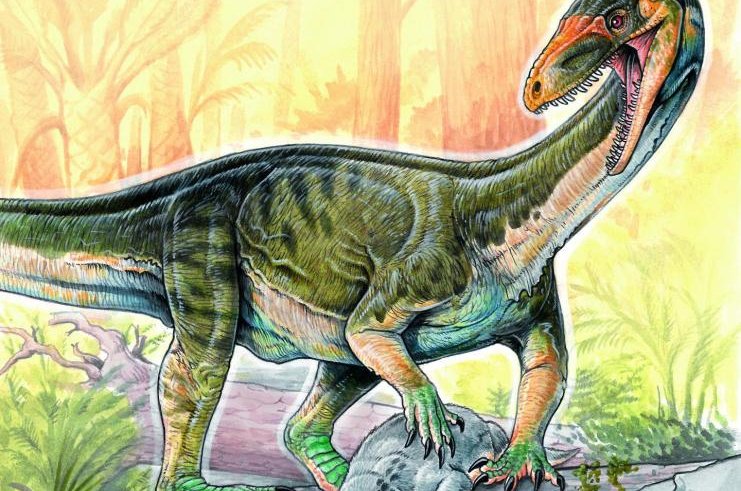The earliest known dinosaur relative, Teleocrater rhadinus, was surprisingly large and walked on four croc-like legs, new research showed. Photo by Gabriel Lio/Museo Argentino de Ciencias Naturales
April 12 (UPI) -- Most paleontologists expected the earliest dinosaur relative to look more or less like a mini dinosaur -- not exactly. Turns out, the earliest dino relative was surprisingly large and croc-like.
Researchers first discovered Teleocrater rhadinus, a common ancestor of birds and dinosaurs, in Tanzania several decades ago, but missing bones made it difficult for scientists to accurately model the reptile.
A specimen unearthed in 2015 finally made it possible to reconstruct the species' size and shape. Unexpectedly, researchers determined Teleocrater rhadinus walked on four crocodilian-like legs. Most assumed the earliest dino relative would be bipedal.
The croc-like reptile, which lived 245 million years ago during the Triassic Period, was surprisingly large, stretching between seven to 10 feet in length. Most researchers assumed the first dino cousin would be roughly the size of a chicken.
Teleocrater rhadinus appears in the fossil record shortly after a group of reptiles called archosaurs diverged into two lineages, a branch that would eventually spawn birds and dinosaurs and another that would feature crocodiles. Teleocrater and its relatives are the earliest species on the bird branch. The croc-like reptile disappeared before the emergence of dinosaurs.
"The discovery of such an important new species is a once-in-a-lifetime experience," Sterling Nesbitt, an assistant professor of geosciences at Virginia Tech, said in a news release.
Teleocrater is one of several early dino cousins helping scientists to better understand the evolutionary origins of dinosaurs. Surprisingly, paleontologist have discovered archosaurs in Russia, India and Brazil, suggesting early dino relatives were widespread.
"It's so exciting to solve puzzles like Teleocrater, where we can finally tease apart some of these tricky mixed assemblages of fossils and shed some light on broader anatomical and biogeographic trends in an iconic group of animals," Michelle Stocker, an assistant professor of geosciences at Virginia Tech.
Researchers detailed their analysis of Teleocrater rhadinus in the journal Nature.















